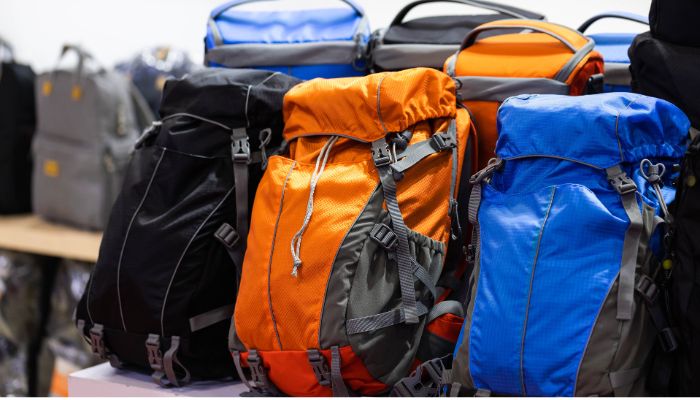
Whether you’re embarking on outdoor adventures or hiking excursions, a hiking backpack is undoubtedly one of your essential pieces of gear. It directly impacts the safety and comfort of your outdoor journey. Therefore, selecting a suitable hiking backpack is crucial. This article is specifically designed for beginners, providing a detailed guide to purchasing a hiking backpack. It aims to help you thoroughly understand this piece of equipment and choose the one that best meets your needs.
Capacity Size
When choosing a hiking backpack, capacity size is undoubtedly the first factor to consider. Below, I will recommend backpack capacities suitable for different types of hiking activities.
For day hikes where you return on the same day, a backpack with a capacity of 15 to 25 liters is sufficient. This size can comfortably hold essentials such as water, food, basic first aid supplies, and rain gear.
For a weekend or short multi-day hikes with camping for two to three nights, opt for a backpack with a capacity of 30 to 45 liters. This size can accommodate daily essentials as well as camping gear like tents, sleeping bags, cooking utensils, spare clothing, and extra fuel.
For extended hikes lasting more than three days or carrying heavy specialized equipment, consider a backpack with a capacity of 50 liters or more. This size ensures ample space to carry all necessary equipment and supplies for longer durations and more challenging outdoor environments.
Types of Backpacks
Hiking backpacks come in various styles, each with unique features suited to different needs. Here are some common types:
Mountaineering Backpacks: Ideal for mountainous terrain or climbing expeditions, these backpacks typically have large capacities to carry heavy gear and plenty of food. They are durable, waterproof, and designed to withstand varying environmental conditions.
Hiking Travel Backpacks: Perfect for long-distance trekking, these backpacks have moderate capacities that balance comfort with functionality. They often feature numerous pockets and compartments for organized storage, making it easy to access items quickly.
Day Hiking Backpacks: Suitable for short hikes or daily use, these compact and lightweight backpacks are convenient to carry. They are practical and straightforward, providing comfort for shorter excursions.
Carrying System
Please pay special attention to the backpack’s carrying system, as it directly affects comfort. A good carrying system distributes weight evenly across your body rather than concentrating it solely on your shoulders and back. Look for backpacks with adjustable waist belts and chest straps to customize the fit according to your body shape and carrying preferences, ensuring optimal comfort.
Material and Quality
When selecting a hiking backpack, consider its material and quality. Opt for durable materials with good waterproof performance to withstand prolonged outdoor use and provide reliable protection for your belongings in adverse weather conditions. Additionally, inspect seams, zippers, and other details closely as they contribute to the overall quality of the backpack. Only choose backpacks with reliable quality to ensure peace of mind and security during your hikes.
External Attachment System and Pocket Design
External attachment systems and pocket designs are also crucial to a backpack’s practicality. External attachment systems allow you to carry items like tents or sleeping bags easily. Pocket designs are practical for organizing small items such as phones, keys, snacks, etc., making them easily accessible. Therefore, pay attention to these features when choosing a hiking backpack to ensure convenience during your hike.
Personal Budget
Hiking backpack prices range from hundreds to thousands of dollars. Consider your budget and how much you are willing to spend. However, keep in mind that a higher price tag does not always mean better quality. Look for a backpack that meets your needs and fits within your budget.
Try-On and Reviews
Before purchasing a hiking backpack, it’s advisable to try it on to experience its comfort and weight-bearing capacity firsthand. Additionally, you can search for online reviews and feedback from other hikers to learn about the backpack’s performance in real-world scenarios. By thoroughly researching and comparing options, you can find a hiking backpack that satisfies your requirements.
Maintenance and Care
After purchasing a backpack, regularly clean it to ensure it remains clean and tidy. Store it in a dry, ventilated place when not in use to prevent moisture and mold. After each use, inspect the backpack for signs of wear and tear. Promptly replace any damaged or excessively worn components to maintain the backpack’s performance and safety.
Conclusion
In conclusion, selecting a suitable hiking backpack involves considering many factors, including capacity size, type, carrying system, material and quality, external attachment system and pocket design, personal budget, trying it on, and reviewing feedback. By carefully weighing these factors, you can undoubtedly choose a backpack that meets your needs and provides robust support for your hiking adventures.



